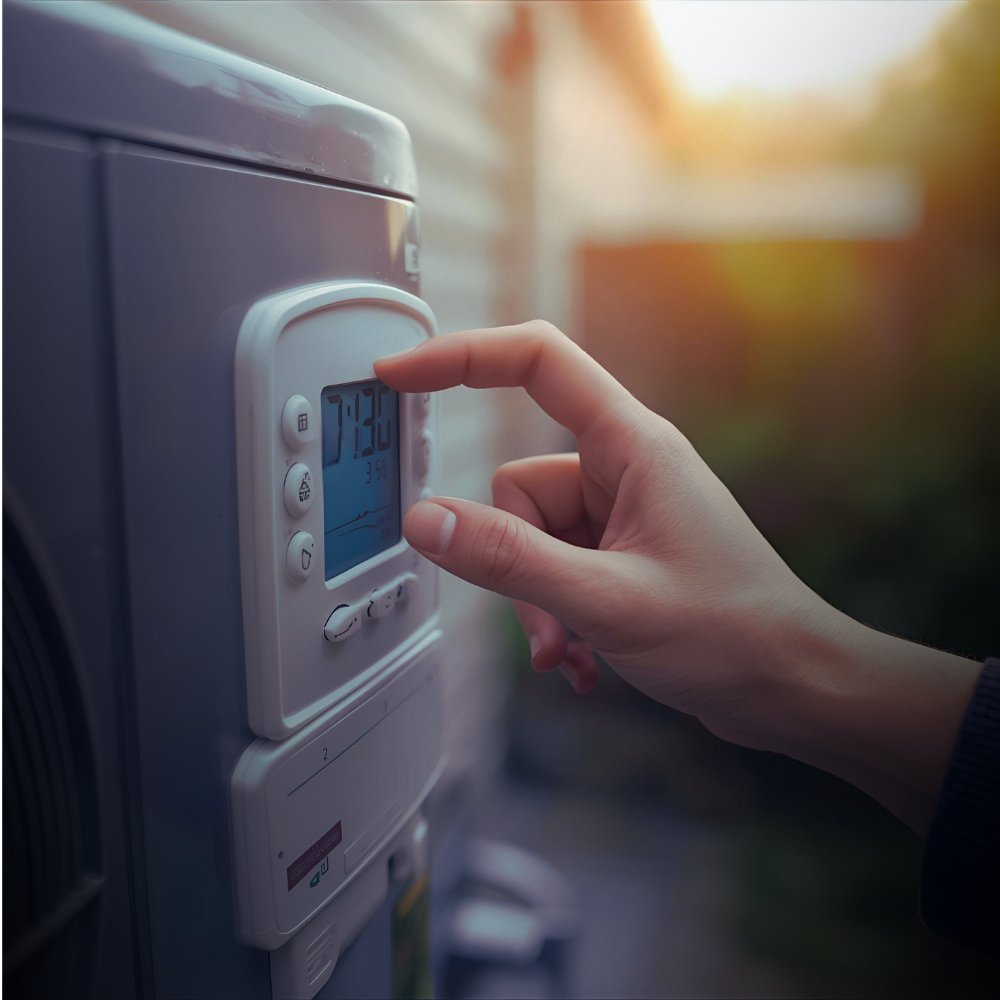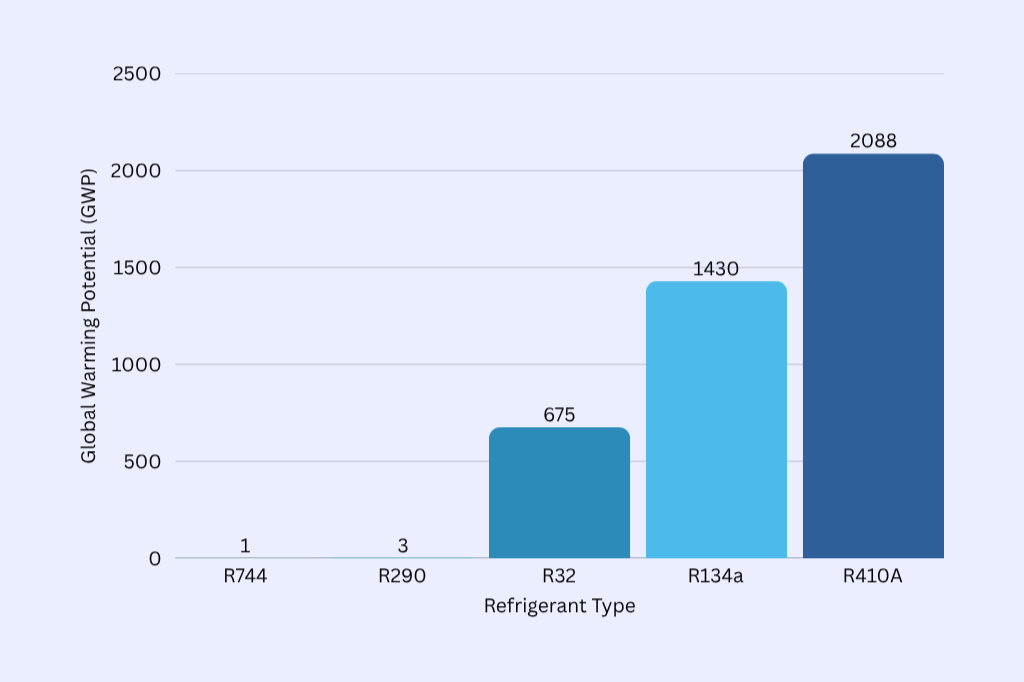Why you should care about CoP
When choosing a Hot Water Heat Pump
When you’re shopping for a new hot water system, it’s easy to focus on upfront cost or brand names. But there’s one number that can make a huge difference to your bills and your household’s carbon footprint: CoP.
If you’ve never heard of it before, don’t worry—you’re not alone. Let’s unpack what CoP means, why a higher number is better, and how it can help you save money while keeping your showers hot.
What is CoP?
CoP stands for Coefficient of Performance. It’s a fancy term used to measure efficiency—basically, how much heat energy you get out compared to how much electricity the system uses.
Think of it like this:
A traditional electric hot water system has a CoP of about 1.0. That means for every one unit of electricity you put in, you only get one unit of heat out.
A modern heat pump hot water system often has a CoP of 3 to 5. That means for every one unit of electricity you put in, you get three to five units of heat out.
In other words, a heat pump is like buying one coffee and getting three to five coffees for free.
Everyday Analogy: Your Family Car
Imagine two cars making the same trip.
Car A uses 10 litres of fuel.
Car B uses only 3 litres of fuel.
Both cars get you there, but one does it using far less energy. The car that sips fuel is the one with the better “CoP.”
With hot water, a higher CoP means your system is doing the same job (heating your shower water) but using far less electricity.
So is CoP a measure of efficiency?
Yes! It’s a measure of how efficient your hot water system is generating heat.
A CoP of 1.0: 1 unit of electricity in = 1 unit of heat out.
A CoP of 4.0: 1 unit of electricity in = 4 units of heat out.
The higher the CoP, the less electricity you pay for and the more ‘Free heat’ your system captures from the air.
Why higher CoP = Lower bills
Every time your hot water system runs, it uses energy. Over weeks and months, that adds up.
Let’s break it down:
Electric storage system (CoP 1.0): To heat 300L of water, it might use about 14 kWh of electricity. At current prices, that’s nearly $4 a day, or over $1,400 a year .
Heat pump with CoP 4.0: To heat the same amount of water, it only needs 3.5 kWh. That’s about $1.20 a day, or around $480 a year.
That’s a saving of nearly $1,000 a year on hot water alone!
Why higher CoP = Lower emissions
It’s not just about bills. In Australia, much of our electricity still comes from fossil fuels. So every unit of electricity you save means fewer emissions.
A heat pump with a high CoP doesn’t just help your household—it helps reduce demand on the grid and cuts down on greenhouse gases. And if you have rooftop solar? A heat pump is the perfect partner, letting you turn excess solar energy into free hot water.
Does climate affect CoP?
Yes, it can. Heat pumps work by pulling heat from the air. In warmer climates, they run more efficiently, which means a higher CoP. In cooler climates, the CoP can drop—but modern systems are designed to handle this. Some even include a small “booster” element for very cold mornings .
Think of it like your car again: it might use a little more fuel going uphill, but it still beats the old gas guzzler every time.
What CoP should you look for?
When comparing heat pump hot water systems, here’s what to keep in mind:
Aim for 3 or higher – Anything less than 3 isn’t taking full advantage of heat pump technology.
Premium systems can reach 4–5+ – These offer the best long-term savings and performance .
Check independent data – Some rebates and energy programs (like the Victorian Energy Upgrades scheme) publish performance figures that you can trust.
The long-term view
Yes, heat pumps usually cost more upfront than traditional systems. But because higher CoP = lower bills, the payback period is often just 4–6 years . After that, it’s pure savings.
And unlike solar panels that depend on sunshine, a heat pump works day and night, year-round.
Everyday Analogy: Shopping Smarts
Imagine you’re buying washing powder.
Brand A: $10 a box, but only lasts 10 washes.
Brand B: $15 a box, but lasts 40 washes.
Which is better value? The more efficient one, of course. Heat pumps with higher CoP ratings are the same—they give you more hot water for every unit of electricity you buy.
Wrapping it up
Understanding CoP might sound technical, but it really comes down to one question: how much heat do I get for every bit of electricity I pay for?
A traditional electric system = CoP 1.0 → one unit in, one unit out.
A heat pump = CoP 3–5 → one unit in, three to five units out.
The higher the CoP, the more efficient the system, the lower your bills, and the smaller your carbon footprint.
So when you’re next comparing hot water systems, don’t just ask about price—ask about CoP. It’s the key number that tells you whether your new system will sip or guzzle electricity for years to come.
ReferencesSustainability Victoria – Heat Pump Hot Water Systems (2024)ACT Government – Sustainable Household Scheme – A Guide to Hot Water Heat Pumps (2021)Electrify Boroondara Knowledge Base – Heat Pumps vs Traditional Hot Water Units (2024)Electrify Boroondara Knowledge Base – Understanding Heat Pumps (2024)








